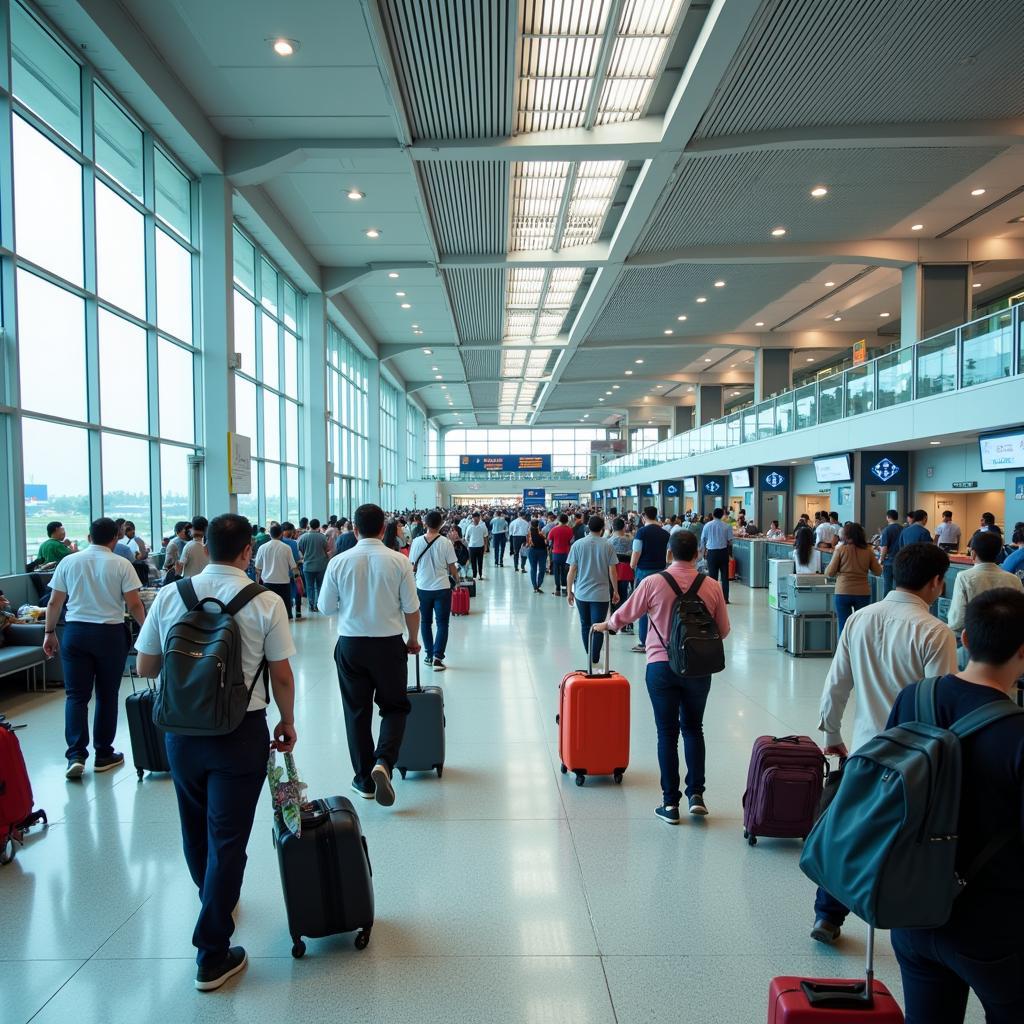AAI airport operations in India play a crucial role in the country’s aviation sector. From managing air traffic control to overseeing airport infrastructure, the Airports Authority of India (AAI) is instrumental in ensuring safe and efficient air travel for millions of passengers each year. This article delves into the various facets of AAI airport operations, exploring its history, challenges, and future prospects.
The Scope of AAI Airport Operations
The AAI manages a vast network of airports across India, ranging from major international hubs to smaller regional airports. Its responsibilities are multifaceted, encompassing everything from air traffic management and passenger facilitation to cargo handling and security oversight. The AAI’s commitment to safety and efficiency is paramount, as it strives to meet the growing demands of India’s rapidly expanding aviation market. One key area of focus is the modernization of airport infrastructure, which includes upgrading terminals, runways, and navigation systems. This is vital for enhancing the passenger experience and accommodating the increasing number of flights. For more information about airports in India, see our list of AAI and private airports: aai and private airport list.
Furthermore, the AAI plays a significant role in developing new airports and expanding existing ones to meet the projected growth in air traffic. This includes initiatives to improve connectivity to underserved regions, fostering regional economic development and promoting tourism. Another critical aspect of AAI airport operations is the implementation of sustainable practices. From reducing carbon emissions to adopting energy-efficient technologies, the AAI is committed to minimizing the environmental impact of its operations.
How AAI Manages Air Traffic Control
Air traffic control (ATC) is a critical component of AAI airport operations, ensuring the safe and orderly flow of aircraft in Indian airspace. AAI’s ATC personnel use sophisticated radar systems and communication technologies to guide aircraft during takeoff, landing, and en route navigation. They are responsible for maintaining safe separation between aircraft, preventing collisions, and managing air traffic flow to minimize delays.
Passenger Facilitation and Airport Security
The AAI also prioritizes passenger facilitation and airport security. This involves providing efficient check-in procedures, baggage handling services, and comfortable waiting areas. Robust security measures are in place to ensure the safety of passengers and prevent unauthorized access to restricted areas. These measures include screening passengers and baggage, deploying security personnel, and utilizing surveillance technologies. Did you know that Delhi airport is managed by a joint venture that includes AAI? Find out more: delhi airport managed by.
 AAI Passenger Terminal
AAI Passenger Terminal
Challenges and Future Prospects of AAI Airport Operations
While AAI airport operations have made significant strides, they also face certain challenges. One key challenge is the increasing congestion at major airports due to the rapid growth in air traffic. This requires strategic planning and investment in airport infrastructure to enhance capacity and improve efficiency. Another challenge is the need to attract and retain skilled professionals in various areas of airport operations, from air traffic controllers to engineers and ground staff. The AAI is actively working to address these challenges through various initiatives, such as investing in training programs and collaborating with international organizations.
Meeting the Demands of a Growing Aviation Market
The Indian aviation market is expected to continue its rapid growth in the coming years, presenting both opportunities and challenges for AAI airport operations. The AAI is focused on developing strategies to meet the increasing demand for air travel, such as expanding airport capacity, implementing new technologies, and enhancing operational efficiency. For insight into AAI leadership, you can learn more about Abhishek Choudhary’s role: abhishek choudhary airports authority of india.
Innovations in Airport Technology
The AAI is also exploring innovative technologies to improve airport operations and enhance the passenger experience. This includes implementing self-service kiosks for check-in and baggage drop, utilizing biometric technologies for security screening, and developing smart parking systems. These innovations aim to streamline processes, reduce waiting times, and create a more seamless travel experience for passengers. Did you know about the airports closed in India? Find out more here: 14 airport closed in india.
Conclusion
AAI airport operations are essential for the smooth functioning of India’s aviation sector. From managing air traffic control and ensuring passenger safety to modernizing airport infrastructure and embracing sustainable practices, the AAI plays a pivotal role in shaping the future of air travel in India. The AAI’s continued commitment to innovation and efficiency will be crucial for meeting the demands of a rapidly growing aviation market and providing a world-class travel experience for passengers.
FAQ
- What does AAI stand for? AAI stands for Airports Authority of India.
- How many airports does AAI manage? AAI manages over 100 airports across India.
- What are the main responsibilities of AAI? AAI’s responsibilities include air traffic management, airport infrastructure development, passenger facilitation, and security oversight.
- How is AAI addressing the challenge of airport congestion? AAI is investing in airport expansion and modernization projects to enhance capacity and improve efficiency.
- What are some of the innovations being implemented by AAI? AAI is implementing self-service kiosks, biometric technologies, and smart parking systems to enhance the passenger experience.
When you need help, call us at +13089626264, email us at [email protected] or visit us at 404 Bothwell St, Oxford, NE 68967, USA. We offer 24/7 customer support.